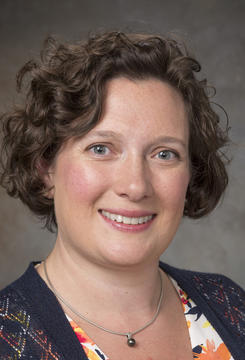
When President Salovey announced that Yale would move classes online after spring recess, he identified the Poorvu Center as a primary resource for faculty, teaching fellows, and students. The center supports one of President Salovey’s goals for Yale “to be the research university most committed to teaching and learning.” Under leadership from Jennifer Frederick and Lucas Swineford, executive directors of the center, a team of more than 40 people started to focus solely on academic continuity plans. The Poorvu Center asked Director of Education Technology Pilar Abuin, who serves as a critical member of the Academic Continuity team, to answer six questions.
Can you share a bit about your background and how you came to Yale?
Of course. I graduated from Columbia University with a Master’s in Instructional Technology and Media and a Bachelor’s in Computer Science and Art History. I started my career in New York City, working for Columbia and then New York University. My husband and I started a family and decided we wanted to move out of New York. There was an opening at Yale for a position managing the Instructional Technology Group, and in January 2014, I joined the Yale team. Soon after that, Yale created the Center for Teaching and Learning, and my team joined the CTL. In 2015, we undertook a project to transition the Learning Management System (LMS) from Classes*V2 to Canvas. In hindsight, I’m so happy the transition took place when it did.
What is Educational Technology?
At its core, educational technology supports teaching and learning. It helps faculty members develop innovative ways to teach concepts and share information with students. It supports pedagogical strategies to engage students - like live polling – or gather feedback on learning – like online quizzes before class. It allows us to share information online and create online learning communities that support our residential classes.
As Director of Educational Technology for the Poorvu Center, what do you do?
I primarily manage an amazing team, and together we help faculty and teaching fellows integrate technology into their classes. This includes helping faculty use Canvas, our LMS, and the various tools integrated into it, like Course Reserves and Zoom, to organize their course, post their syllabus, upload assignments, and share readings from the library. My team and I also pilot new technology to integrate into Canvas or other aspects of teaching. Our job, to support a diverse community with a relatively small core team, would not be possible without close partnerships with our professional school colleagues and colleagues in Information Technology Services (ITS), the University Library, and the Registrar’s office.
How has your role shifted since Yale decided to transition residential learning to an online format temporarily?
Remember when I said, I was happy Yale transitioned to Canvas when it did? Our team conducted a year-long pilot and then a one-and-a-half-year transition from the old LMS to Canvas. The last two weeks have essentially served as a massive transition to Canvas and Zoom for all faculty and students with a deadline of March 23. The Poorvu Center team has worked rapidly to ensure we support the transition. We’ve conducted more than 20 workshops and 650 consultations since March 5. We still support faculty and Yale’s LMS, but we now support it at a new scale. Hundreds of courses that never used the system now use it, and Zoom, to help facilitate classes. We have more than 2,300 active course sites this spring semester, and we’re supporting more than 2,000 instructors.
What should all faculty members consider as they begin to teach online?
It might sound ridiculous coming from a technologist, but I think instructors need to consider the well-being of their students more than the technicalities of how they use Canvas and Zoom. The Poorvu Center, ITS, and the Library are all here to support faculty and help them find a solution to keep teaching. Faculty members are uniquely responsible for preserving the dynamics of their class and for students meeting their learning objectives by the end of the semester. My Faculty Teaching Initiatives colleagues at the Poorvu Center can help faculty think through some of those tough questions!
Although classes just resumed on March 23, can you share any stories from the transition?
We’ve worked with more than 1,000 instructors in the last two weeks, but one of them said, “thank you so much for your quick response and steady support. The Poorvu Center has been the one constant ray of hope throughout this ordeal.”
I think we learn more each day, but the faculty, teaching fellows, and students at Yale have confronted this challenge with a “can do” attitude. It makes me happy at the end of a long day to see our community support each other.
